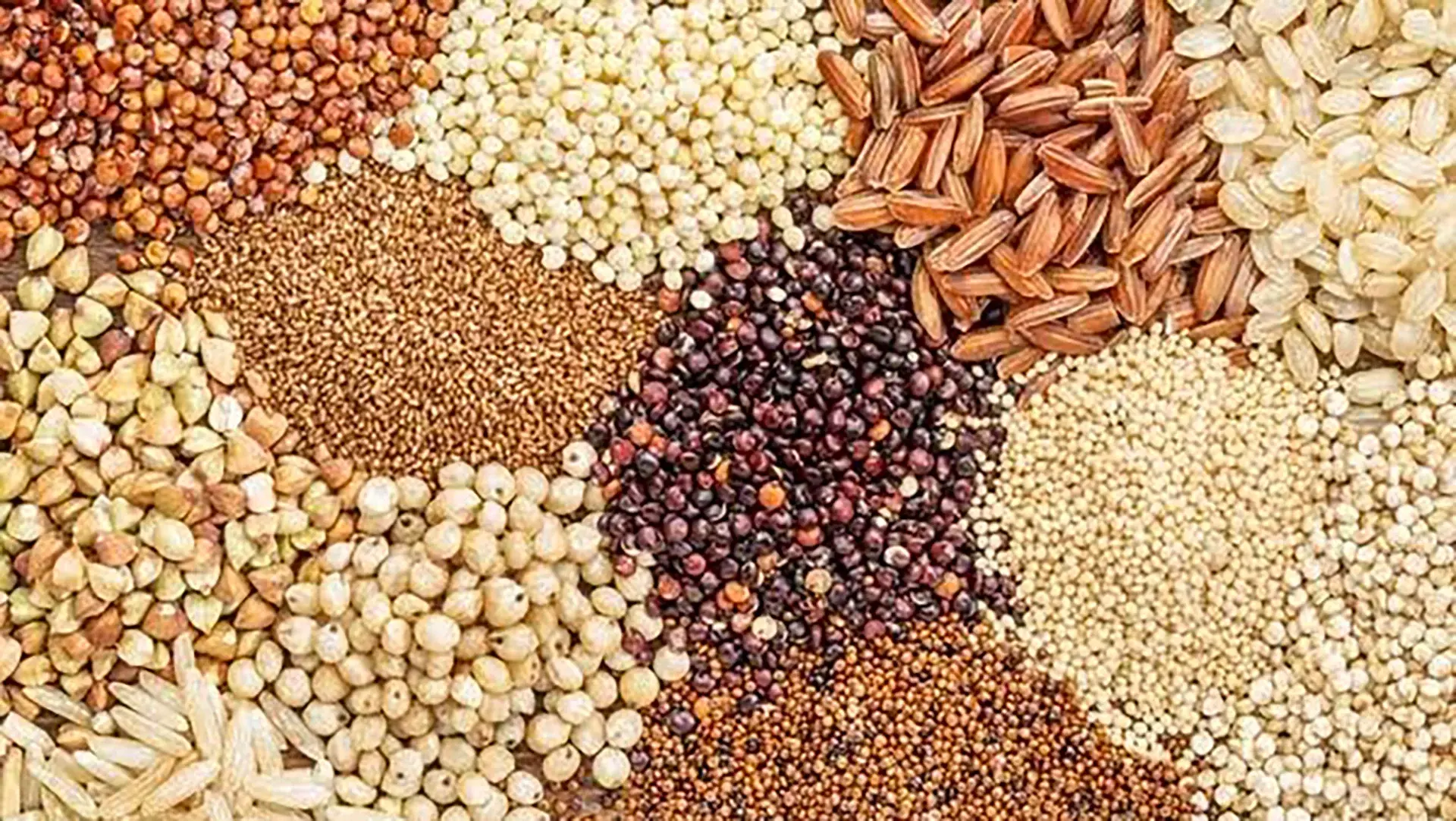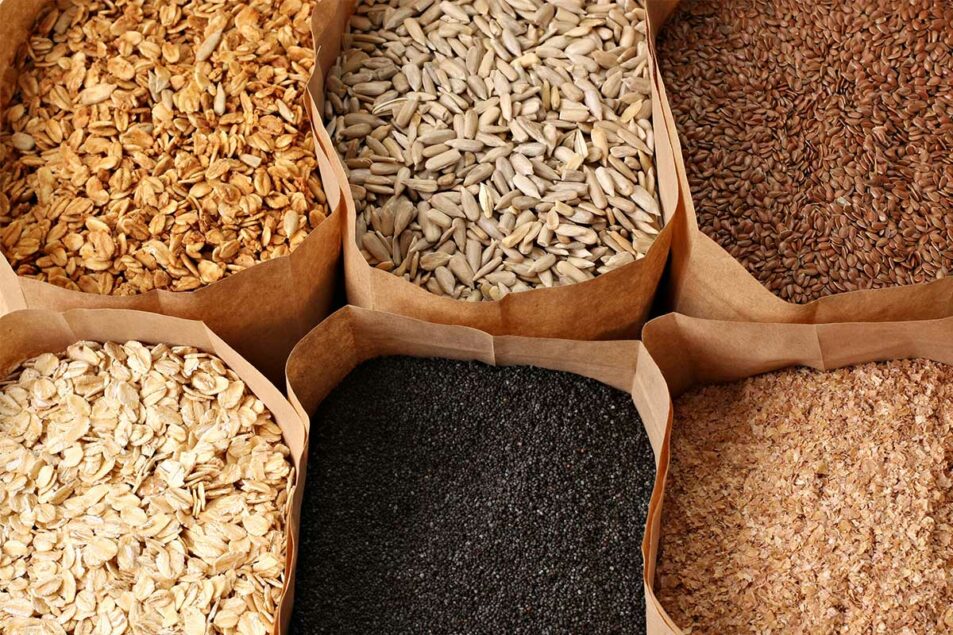Whole grains are an essential part of a healthy diet, providing a wealth of nutrients, fiber, and health benefits. Among the various whole grains, brown rice and quinoa stand out for their exceptional nutritional profiles and versatility in cooking. This article explores the knowledge surrounding these two whole grains, highlighting how they can improve your health and contribute to a balanced diet.
Understanding Whole Grains

This composition ensures that whole grains retain their natural nutrients, including fiber, vitamins, and minerals. In contrast, refined grains have been processed to remove the bran and germ, resulting in a loss of nutrients and fiber.
Benefits of Whole Grains
Incorporating whole grains into your diet offers numerous health benefits:
- Nutrient-Rich: Whole grains are packed with essential nutrients, including B vitamins, iron, magnesium, and antioxidants.
- High in Fiber: Helps regulate blood sugar levels, and promotes a feeling of fullness, which can aid in weight management.
- Reduced Risk of Chronic Diseases: This is associated with a lower risk of heart disease, type 2 diabetes, and certain cancers.
Brown Rice: A Nutritious Whole Grain
Nutritional Profile of Brown Rice
Brown rice is a whole grain rice that has only the outer hull removed, preserving its bran and germ. This makes it a more nutritious option compared to white rice. A one-cup (195 grams) serving of cooked brown rice contains:
- Calories: 215
- Protein: 5 grams
- Fat: 1.5 grams
- Carbohydrates: 45 grams
- Fiber: 3.5 grams
- Magnesium: 84 mg (21% of the Daily Value)
- Phosphorus: 150 mg (15% of the Daily Value)
- B Vitamins: Includes thiamine, niacin, and vitamin B6
Health Benefits of Brown Rice
- Heart Health: Brown rice is rich in fiber and antioxidants, which help lower cholesterol levels and reduce the risk of heart disease. The magnesium content also supports healthy blood pressure.
- Weight Management: Helping you feel full longer and reducing overall calorie intake. This can be beneficial for weight management and preventing obesity.
- Blood Sugar Control: Brown rice has a lower glycemic index compared to white rice, leading to more stable blood sugar levels. This is particularly important for individuals with diabetes or those at risk of developing the condition.
- Nutrient Density: Brown rice provides essential nutrients, including B vitamins, which are crucial for energy metabolism and overall health.
Quinoa: A Superfood Grain
Nutritional Profile of Quinoa
Quinoa (pronounced keen-wah) is often referred to as a “superfood” due to its exceptional nutritional profile. Unlike brown rice, quinoa is a seed but is commonly classified as a whole grain. A one-cup (185 grams) serving of cooked quinoa contains:
- Calories: 222
- Protein: 8 grams
- Fat: 3.5 grams
- Carbohydrates: 39 grams
- Fiber: 5 grams
- Magnesium: 118 mg (30% of the Daily Value)
- Iron: 2.8 mg (15% of the Daily Value)
- B Vitamins: Includes riboflavin and vitamin B6
Health Benefits of Quinoa
- Complete Protein Source: This is particularly beneficial for vegetarians and vegans.
- High in Antioxidants: Quinoa is rich in antioxidants, which help protect the body from oxidative stress and inflammation. This may reduce the risk of chronic diseases, including heart disease and cancer.
- Supports Digestive Health: The fiber content in quinoa aids digestion, promotes regularity, and supports a healthy gut microbiome.
- Blood Sugar Regulation: Quinoa has a low glycemic index and is high in fiber, which helps stabilize blood sugar levels. This makes it a suitable option for individuals with diabetes.
- Rich in Nutrients: Quinoa provides a variety of essential nutrients, including magnesium, iron, and B vitamins, which support overall health and well-being.
Comparing Brown Rice and Quinoa
While both brown rice and quinoa are nutritious whole grains, they have distinct differences:
| Nutrient | Brown Rice (1 cup cooked) | Quinoa (1 cup cooked) |
|---|---|---|
| Calories | 215 | 222 |
| Protein | 5 grams | 8 grams |
| Carbohydrates | 45 grams | 39 grams |
| Fiber | 3.5 grams | 5 grams |
| Magnesium | 84 mg (21% DV) | 118 mg (30% DV) |
| Iron | 1 mg (6% DV) | 2.8 mg (15% DV) |
Taste and Culinary Uses
- Brown Rice: Brown rice has a nutty flavor and chewy texture, making it a great base for stir-fries, grain bowls, and salads. It takes longer to cook than white rice, typically requiring about 45 minutes.
- Quinoa: Quinoa has a slightly nutty taste and a fluffy, light texture when cooked. It cooks faster than brown rice, usually taking about 15 minutes. Quinoa can be used in salads, soups, and as a side dish, and it can also be incorporated into baked goods.
How to Incorporate Brown Rice and Quinoa into Your Diet
Meal Ideas with Brown Rice
- Stir-Fried Brown Rice: Sauté vegetables and protein of your choice (chicken, tofu, or shrimp) and toss in cooked brown rice for a nutritious stir-fry.
- Brown Rice Salad: Combine cooked brown rice with chopped vegetables, beans, and a light vinaigrette for a refreshing salad.
- Brown Rice Bowl: Create a grain bowl with brown rice as the base, topped with roasted vegetables, avocado, and a protein source.
Meal Ideas with Quinoa
- Quinoa Salad: Mix cooked quinoa with diced cucumbers, tomatoes, red onion, and a lemon-olive oil dressing for a refreshing salad.
- Quinoa and Vegetable Stir-Fry: Use cooked quinoa instead of rice in a vegetable stir-fry for a nutrient-packed meal.
- Quinoa Breakfast Bowl: Cook quinoa in almond milk and top with fruits, nuts, and a drizzle of honey for a nutritious breakfast option.
Conclusion
Understanding the knowledge surrounding whole grains, particularly brown rice and quinoa, empowers you to make informed dietary choices that enhance your health. Both brown rice and quinoa offer unique nutritional benefits, making them valuable additions to a balanced diet.
Embrace the versatility of brown rice and quinoa and experiment with different recipes to discover how these whole grains can improve your overall well-being. Whether you choose brown rice for its hearty texture or quinoa for its complete protein profile, both grains can play a significant role in promoting a healthy lifestyle.
Read Also About Kale is often referred to as one of the healthiest vegetables on the planet, packed with essential vitamins, minerals, and antioxidants.

